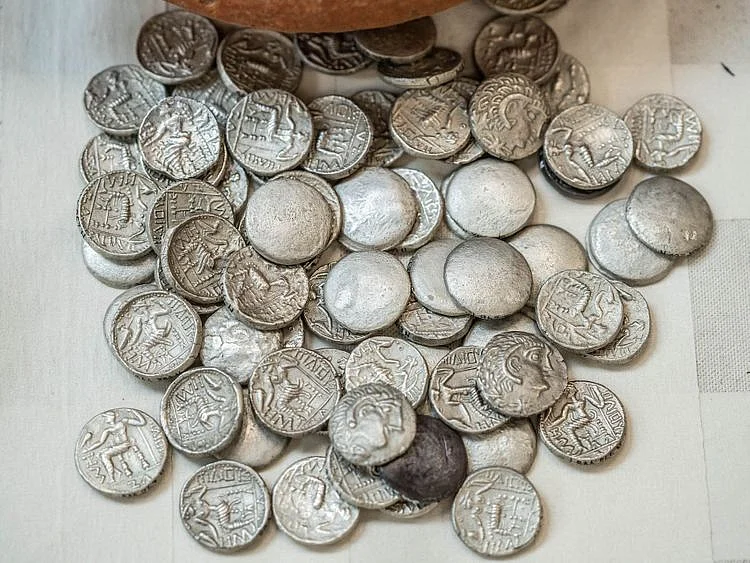409 silver coins dating back to 3rd century found in Sharjah’s Mleiha area
Ancient Greek currency was inspired by Alexander the Great and his Seleucid dynasty

Sharjah: An ancient jar containing numerous silver coins dating back to the third century BCE (Before Common Era) was recently discovered in Mleiha, the Sharjah Archaeology Authority announced on Wednesday.
The coins, minted and circulated in Mleiha, were inspired by the coins of Alexander the Great and his Seleucid dynasty successors (Hellenistic state in Western Asia that existed from 312 to 63 BCE).
According to Sharjah Archaeology Authority, the first issues of the minted coins depicted icons of that period, including the head of Hercules (represented by Alexander the Great) and Zeus (the Greek god sitting on his throne), in addition to the word ‘Alexander’ engraved in Greek script. As time progressed, the engraving was replaced with the word ‘Abel’ written in Aramaic script.
Ancient Greek currency
The artefacts were first discovered by the local archaeological team in February 2021. Dr Sabah Aboud Jasim, Director-General of Sharjah Archaeology Authority, said: “When this heavy pottery jar (weighing 9kg) was discovered, it was suspected that it would contain rare artefacts. Upon carefully opening the pot at the Sharjah Archaeology Authority laboratory, we found it completely filled with numerous silver coins of the drachma (ancient Greek currency unit) quad category or ‘tetradrachma’.
Dr Jasim added: “There were a total of 409 coins in the jar, with each coin ranging in weight from 16 to 17 grammes, and the currency material was silver.” There were 387 coins in single-sided moulds and 22 in two-sided moulds.
“Among the collection were coin designs that had been previously discovered throughout the Arabian Gulf region and also coin designs that were unique to this discovery at Mleiha. The current collection is considered to be more extensive than any other in the region” he added.
Jasim noted a similar hoard of 309 coins, dating back to the same period, was discovered in the Kingdom of Bahrain in 1970 by the Danish archaeological mission.
Significance of Mleiha in UAE history
Mleiha is a Unesco-nominated World Heritage Site in Sharjah and home to a number of significant sites, including Bronze Age tombs and pre-Islamic forts.
In the pre-Islamic period, the city of Mleiha was considered as one of the most important sites in the Arabian Peninsula. In the early third century BCE, it became a major commercial centre for convoys passing between the north and south of the Arabian Peninsula.
A tombstone discovered in Mleiha, which dates back to the late third century BCE, confirmed the presence of the Oman Kingdom, and research has shown that Mleiha was likely to have been its capital at the time.
Also Read
UAE Central Bank sets sights on digital currency launch, aims to be among world's Top 10 banking regulatorsSheikh Mohammed bin Rashid briefed about ‘Oyoon’ security surveillance programme in DubaiUAE Minister Mariam Almheiri explores cooperation in food and water security with Israel officialsAbu Dhabi updates COVID-19 entry proceduresMleiha was regarded as a prosperous society in the region. This economic power allowed it to extend its influence throughout the Arabian Peninsula, the Mediterranean and Mesopotamian worlds, as well as The Levant and Persia.
The impact of Mleiha was even felt as far as Afghanistan and the Sindh Valley (previously the Kushan Kingdom). The extensive collection of amphora jars (antique containers used for the storage and transportation of food and drinks) imported from Rhodes is indicative of this far-reaching trade. Several findings were also discovered with languages indicating Southern Arabic, Aramaic and Zabur (which is a type of Musnad writing).
Sign up for the Daily Briefing
Get the latest news and updates straight to your inbox
Network Links
GN StoreDownload our app
© Al Nisr Publishing LLC 2025. All rights reserved.